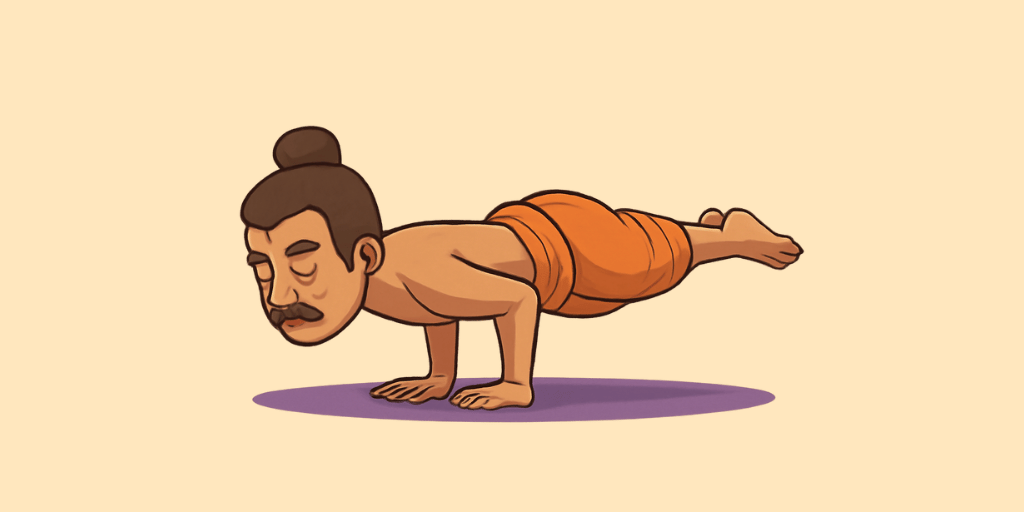Sanskrit Name: मयूरासन
English Name: Peacock Pose
Description:
Mayurasana, known as Peacock Pose, is a highly demanding posture that challenges your strength, balance, and concentration. In this pose, your body resembles a peacock displaying its feathers, embodying both elegance and power. The term Mayura (मयूर) translates to peacock in Sanskrit, while Asana (आसन) refers to pose or posture, making Mayurasana the “Peacock Pose.” Originating from traditional Hatha Yoga, this pose is typically practiced by advanced yogis seeking to extend their capabilities. Some traditions suggest that this pose is inspired by the peacock’s majestic ability to fan its feathers and stand confidently. Practicing Mayurasana is thought to purify the body, boost vitality, and improve both mental and physical clarity. It has been an integral part of yogic teachings for centuries, often aimed at enhancing strength and focus, as well as promoting digestion and the health of internal organs.
Benefits:
- Improves Digestion: The pose compresses the abdomen, stimulating digestive organs and enhancing digestion.
- Strengthens Arms and Wrists: Balancing on the hands builds strength in the arms and wrists, promoting overall upper body strength.
- Enhances Balance and Coordination: Practicing Mayurasana improves balance, coordination, and focus, which can translate to better performance in other physical activities.
- Stimulates Metabolism: The pose invigorates the metabolic system, which can aid in weight management and energy levels.
- Detoxifies the Body: The pressure on the abdominal organs helps in detoxifying the body, promoting overall health.
- Boosts Mental Clarity: The concentration required for balance can enhance mental clarity and mindfulness.
Medical Conditions(Relief):
Mayurasana, or Peacock Pose, can be beneficial for various medical conditions. It aids in digestion by stimulating the abdominal organs, which can help alleviate issues like constipation and indigestion. This pose also strengthens the wrists, arms, and shoulders, making it useful for those with upper body weaknesses. Additionally, Mayurasana can improve mental focus and relieve stress, which may be helpful for individuals dealing with anxiety or depression. Overall, practicing this asana promotes physical strength and mental clarity.
Medical Conditions(Avoid):
- Carpal Tunnel Syndrome: The weight-bearing nature of this pose can exacerbate nerve compression in the wrists.
- Pregnancy: This pose places pressure on the abdomen and can be unsafe for pregnant individuals.
- Recent Abdominal Surgery: Those who have undergone surgery in the abdominal area should avoid this pose to prevent strain and complications.
- Hernia: The intense core engagement can worsen a hernia condition.
- High Blood Pressure: Inversions and pressure on the head can lead to increased blood pressure, posing risks.
- Glaucoma: The pressure on the head and eyes in this pose can aggravate glaucoma symptoms.
- Severe Wrist or Shoulder Injuries: Individuals with injuries in these areas may find this pose painful and should refrain from practicing it.

